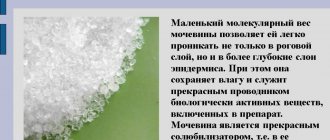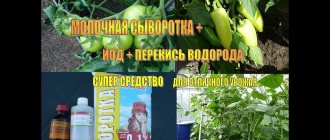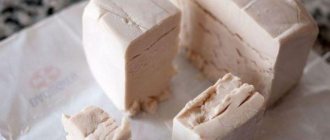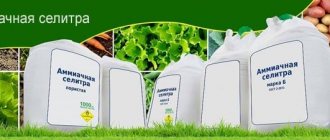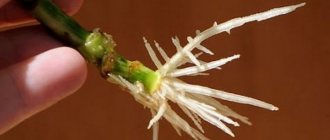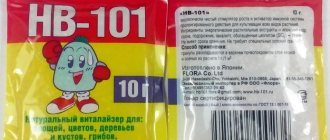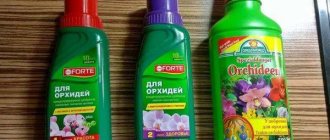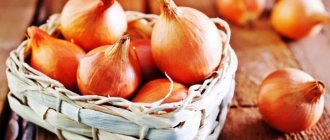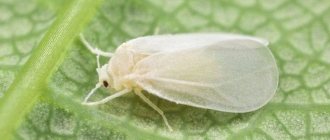- Safety precautions when working with potassium permanganate.
- Useful properties of potassium permanganate.
- The use of potassium permanganate for the prevention of infections and their treatment.
- Potassium permanganate against parasites and pests.
- Potassium permanganate to stimulate root formation of cuttings and seeds.
- Potassium permanganate as a fertilizer for indoor plants.
- Symptoms of potassium and manganese deficiency are:
- The recipe for fertilizer with potassium permanganate is as follows:
Potassium permanganate (chemical formula KMnO4) or, as people often call it, potassium permanganate has been known for quite a long time and was used in the household by our grandmothers and mothers. Potassium permanganate was used for various purposes - it was used to make baths for newborns, wash wounds, treat the stomach, and even stain wood. However, if at present more modern means and methods can be used for all of the above, then for floriculture, a solution of potassium permanganate is still the most common and at the same time no less effective remedy .
When certain substances interact with potassium permanganate, it becomes activated and can explode. Therefore, you must be careful when working with potassium permanganate.
Safety precautions when working with potassium permanganate.
Important! A highly concentrated solution of potassium permanganate, as well as undissolved crystals, can cause severe chemical burns.
- Do not allow potassium permanganate to interact with any other substances, especially aluminum, magnesium, phosphorus, etc. to avoid fire and explosions.
- Avoid direct contact with skin as potassium permanganate stains and dries the skin.
- Wear rubber gloves when handling the solution.
Important! If crystals get on your skin, try not to wash them off with water, but remove them with a dry cotton pad. Only after completely removing the crystals from the skin can you rinse the infected area with water and lubricate it with a rich cream.
What is potassium permanganate
Potassium permanganate has the chemical formula KMnO4 and in everyday life is called briefly and simply - potassium permanganate. Another name sounds like potassium permanganate. From a pharmacological point of view, this substance is considered deodorizing and antiseptic.
When handling potassium permanganate, it is very important to be careful, since it is active with some substances (aluminum, magnesium, phosphorus, calcium, sulfur, glycerin), which can lead to an explosion.
When using dark purple crystals to treat plants and soil, it is advisable to wear gloves. If the concentrated solution gets on the skin, there is a risk of getting burned.
The use of potassium permanganate for the prevention of infections and their treatment.
When replanting houseplants, you can use a solution of potassium permanganate. also used to disinfect indoor plants . It is suitable both for watering the soil as a preventive measure for fungal infections , and for treating roots, bulbs and tubers infected with rot .
Potassium permanganate saves from rot.
In the first case watering is carried out with a more concentrated solution of potassium permanganate (wine-colored), in the second case, both a weak (pale pink) and medium concentrated (pink) solution of potassium permanganate is used. When replanting a plant, carefully examine its underground organs. If the plant is completely healthy, then for prevention, even healthy roots, tubers, and bulbs can be soaked in a weakly concentrated solution for 15-20 minutes. In the case of an infected plant, the rotten roots are cut back to healthy tissue and soaked in a medium concentrated solution of potassium permanganate for the same time.
Important! When a plant is infected with rot, the pot, and especially the soil, is also infected. When planting a plant, be sure to treat the pot with a soap solution (using laundry soap), pour boiling water over it, and preferably use new soil.
Description and composition of potassium permanganate
Potassium permanganate permanganate is not a chemical that harms the taste of plants and humans. The substance is distinguished by its unique qualities:
- an antiseptic that is suitable for soil as a disinfectant against certain diseases;
- disinfectant component for tools used in the garden, garden or greenhouse;
- eliminates fungal spores (including parts inside garden structures);
- helps accelerate the development of young plants, used for seeds.
Potassium permanganate is sold dry in the form of crystals. Color: purple, almost black-violet. But it is used as a solution. Moreover, it is very economical, quite powerful, and medicinal.
Literally all gardening premises, tools, soil, preparations for planting, seedlings, and seeds can be subjected to treatment. Stages for processing: from spring to late autumn.
The formula of potassium permanganate is KMnO. Which indicates a complex compound with proteins. As a conclusion: it contains natural ingredients. During contact with organic matter, a natural release of atomic oxygen occurs. Has names:
- potassium permanganate or manganese;
- potassium salt of permanganic acid.
Treatment, spraying or any other treatment of garden crops with manganese differs from human therapy. There are instructions for use on the land.
Potassium permanganate against parasites and pests.
It is believed that a solution of potassium permanganate not only disinfects and disinfects, but also helps in the fight against insect pests. There is a deal of truth in it. My experience shows that potassium permanganate can be used in combination with other pest control agents , but do not rely on it alone, since potassium permanganate is not a poison for most insect pests .
Potassium permanganate alone will not help you cope with insect pests.
Will potassium permanganate help against midges? No - you cannot remove flying insects from your plant using potassium permanganate alone. Use special insecticides for this. To combat insect pests, I advise you to use ready-made preparations Fufanon and Actellik.
The best preparations for working with seedlings
The seeds are ready, bags with garden soil, coarse sand and peat have been removed from the storerooms. The exciting moment of sowing is approaching. How to avoid disappointment and get more healthy seedlings? Let's turn to science and the experience of experienced gardeners.
Tillage
Disinfection of the substrate is a very important step, especially if you plan to grow seedlings in an apartment. It would be useful to process it during stratification. It is generally accepted that for disinfection it is enough to spill the soil with potassium permanganate (in common parlance, potassium permanganate). But experience shows that this treatment does not give the desired effect. Although potassium permanganate is a strong oxidizing agent, when it enters the soil it is consumed mainly in the reaction with its organic components. Moreover, oxidation occurs mainly on the surface and has little effect on pathogenic microflora throughout the entire volume of the substrate. As a result, we get a slight disinfection of the surface layer of soil and at the same time an increase in the amount of potassium and manganese in it, and this is not what is required. Other processing methods are more reliable:
- steam the soil (or process in the microwave);
- add a biological product to the seed substrate, for example, “Gliocladin” (based on Trichoderma harziannum) or “Fitosporin” (based on Bacillus subtilis), or their analogues.
Steaming is used for any sowing method. Soil biotreatment is only suitable for growing plants at above-zero temperatures. Microbiological agents will help suppress pathogens of fungal diseases, but they are powerless against eggs, larvae and adult pests. Preparations based on live cultures have a limited shelf life and strict requirements for storage conditions. In winter and early spring, it is difficult to find fresh biological preparations (they become unusable after freezing). The biological product can be used if you are sure that it is fresh and active and there are no pests in the soil. But from experience, the steaming method is better and more reliable.
Seed disinfection
Seeds may carry spores of pathogenic microflora on their surface that threaten crops, so it is advisable to disinfect them. Treatment in a solution of potassium permanganate is usually used. Much less known (although more effective) is the treatment with hydrogen peroxide. Unfortunately, both methods allow the destruction of infectious agents only on the surface of the seed and do not have a prolonged protective effect on seeds located in the ground. You can use microbiological preparations (Glyokladin, Fitosporin) - they give good results on the seeds of vegetables (tomatoes, peppers, etc.) and ornamental plants that do not require stratification. It is convenient to combine treatment with stimulation of seed germination.
If you need to sow expensive or rare seeds, it is safest to use special seed treaters - for amateur gardens this is Vitaros. It destroys fungal infections both on the surface and inside the seeds, and has a long-term protective effect - up to three months. Vitaros can be used to water already-made crops - the protective properties are preserved, although to a lesser extent. In addition, the drug promotes more friendly shoots.
Germination stimulation
If the quality of the seeds is unknown, it is often necessary to further stimulate their germination. Many have encountered problems germinating rare wild perennials. It turned out that of the drugs that promise to stimulate germination, Epin and succinic acid give the best results. When treated with Zircon and Novosil, more active and friendly seed germination was not observed. Scarification works well for seeds with a dense, hard shell.
Protection against fungal infections
If signs of fungal diseases appear in the crops, urgent action is necessary. Traditional methods - watering with potassium permanganate, sprinkling the surface of the soil with sand - are useless in this case. The use of microbiological preparations also does not give results. The seedlings are sensitive: even an hour or two of delay can cost the lives of most of them. It is better to dilute “Vitaros” (or “Maxim”) according to the instructions, pour it into a spray bottle and spray the plants and soil surface with a slight soaking of the soil, or gently pour the surface (“Maxim”). Only “Maxim” inhibits the development of seedlings.
Pest Control
No matter how hard we try, pests can get into crops. To combat them, Fitoverm (based on an extract of soil fungi) is suitable, and in difficult cases, Actellik. All traditional methods are inferior to them in terms of effectiveness.
Strong seedlings
The most effective way to prevent seedlings from stretching is to keep them at a temperature no higher than +15...+18 °C and in good lighting. But there are times when additional measures are required. Experts recommend using growth inhibitors; for the amateur garden, this is the drug “Athlet”. However, according to the experience of colleagues, its use on seedlings of ornamental annuals (hybrid varieties of petunias) did not give a noticeable result. But when processing vegetable seedlings (sweet and bitter peppers), strong, stocky plants with wider leaves were obtained than those of the control specimens. I do not know the results of using Atleta on perennial seedlings. As an additional means of strengthening the root system of plants, the drug “Ribav-Extra” has proven itself well.
Preparing for planting in the ground
The seedlings have grown, the weather is suitable - it’s time to prepare for planting in open ground! To increase the stability of young plants, you can treat them with a “Silka” or “Zircon” solution; if they are not available, potassium humate or microfertilizers with a concentration 2-3 times less than recommended will do (remember that these are seedlings).
Potassium permanganate to stimulate root formation of cuttings and seeds.
When propagating indoor plants by seeds or cuttings , you can also use potassium permanganate. The seeds are soaked for 30-40 minutes in a weak solution of potassium permanganate and then planted in the ground. In this case, you kill two birds with one stone - you disinfect the seeds and stimulate their germination . Cuttings can also be soaked in a solution of potassium permanganate for faster root formation . You can replace potassium permanganate with Kornevin .
Potassium permanganate for indoor flowers - application and benefits
Prevention of infections in underground organs
Potassium permanganate saves from rot that appears on damaged roots, tubers and bulbs. It is advisable to use it when transplanting corms. If underground organs have been damaged, then after removing the rotten area, you can put them in a container with diluted KMnO4 for 10-15 minutes. But even whole tubers and bulbs cannot be prevented by keeping them in a pink solution of potassium permanganate.
Potassium permanganate against pests of indoor plants
Very often, potassium permanganate is recommended for indoor flowers against midges and other insect pests. Of course, you can try its application in practice for this purpose. But still, I would recommend that in such a situation you use stronger targeted insecticides. For example, “Grom-2”, “Aktara” or the equally effective “Aktellik” can help.
Potassium permanganate is not poisonous to flying insects, so it is difficult to obtain a positive effect. If there are midges on the flowers, you should also reconsider the soil moisture regime.
This substance helps get rid of earthworms if they happen to end up in a flower pot. These soil inhabitants are very useful and necessary in natural conditions, but in the limited space of a container they only cause harm to plants.
Soil disinfection for indoor plants
Powdery mildew, late blight, dangerous gray mold - this is not a complete list of infectious diseases against which potassium permanganate is effective. It is used as a prophylactic against fungus and as an active component in the fight against it.
When replanting plants, do not forget to disinfect not only the soil, but also the pots and tools for work.
Accelerating berry set
If you grow fruit-bearing fruit crops at home (for example, strawberries, citrus fruits), then you can use a solution of microelements to stimulate fruiting. In this case, the use of potassium permanganate in combination with boric acid and ash gives good results.
The proportions of the starting substances for the preparation of such a product are as follows: potassium permanganate and boric acid - 1 g each, sifted ash - ½ cup, water - 5 liters.
Stimulation of seed and cutting growth
The use of potassium permanganate as a stimulator of seed germination during the independent propagation of many indoor plants is justified. To do this, the seed buds are soaked in a KMnO4 solution for 30-40 minutes. At the same time, seeds are disinfected before sowing.
Soaking in a permanganate solution is also used in green cuttings. In this case, it is a mineral stimulator of root growth. Potassium permanganate can replace heteroauxin if you don't have it on hand.
The method of soaking seeds and cuttings can be used not only for indoor flowers, but also for garden plants. This is effective for cucumbers, peppers, cabbage, eggplants and tomatoes before sowing them as seedlings. It is also useful to soak the seeds of dill, parsley and other herbs if you grow them on the windowsill.
Potassium permanganate for indoor plants as fertilizer
Since this substance is a source of manganese and potassium, if there is a shortage of them, it is advisable to consider potassium permanganate as a plant food. To determine whether there is a deficiency of these elements, you need to pay attention to the following features.
Signs of potassium deficiency are:
- dull greenish-blue leaf color;
- yellowing of the leaf blade along the veins;
- brown or brown tips of leaves;
- lack of flower buds;
- curling of leaves along the edge.
Signs of manganese deficiency are:
- chlorosis between the veins or at the base of young leaves;
- brown spot and leaf dieback.
Disinfectant solution for flower bouquets
Of course, plants grown in a garden or meadow are not considered indoor plants. But, since we often put them in a vase at home, I thought it would be appropriate to talk about them. It is useful to add potassium permanganate to the water in which cut flowers stand. It disinfects the solution and thereby extends the shelf life of the bouquet.
The pink solution is especially useful for tulips and daffodils. But even when preparing a nutrient mixture with sugar, permanganate must be added to the water. But don't forget to dilute it first to a light pink shade.
Potassium permanganate as a fertilizer for indoor plants.
How can you tell if your houseplant is lacking potassium or manganese?
Symptoms of potassium and manganese deficiency are:
- twisting the sheet plate along the edge
- yellowing of leaf tips
- pale leaves
- chlorosis
Diagnosis of plant micronutrient deficiency.
The recipe for fertilizer with potassium permanganate is as follows:
- boric acid 1/3 teaspoon
- potassium permanganate on the tip of a toothpick
- 3-5 drops of iodine
- 3 liters of water
Boric acid must be dissolved separately in warm water (40-45 degrees), until the crystals are completely dissolved. potassium permanganate in a prepared container in 3 liters of water until a pale pink color is obtained . Then add 3-5 drops of iodine . And lastly, add dissolved boric acid . With this solution it is necessary to carry out both root and extra-root feeding of domestic plants.
Important! Fertilizing should only be done on watered plants; it is not recommended to apply fertilizing to dry soil.
A solution of potassium permanganate allows you to compensate for the lack of microelements such as potassium and manganese. In addition, it has a beneficial effect on fruiting indoor plants, such as pomegranate, persimmon, citrus fruits (lemon or orange). But an excess of microelements can lead to undesirable consequences . Therefore, do not abuse this substance.
Is it possible to water indoor flowers with potassium permanganate?
In different concentrations, a solution of potassium permanganate brings considerable benefits to plants. But what flowers can be watered with potassium permanganate? How often can I spray and water? Let's figure it out.
The frequency of watering indoor plants with manganese is determined by two factors. First, as already mentioned, potassium permanganate is a source of potassium and manganese. They are important and provide certain benefits to plants. But in large quantities they can have a negative effect on the development of the plant organism.
Secondly, when regularly watering indoor flowers with a KMnO4 solution, acidification of the soil occurs. Not all houseplants need and can withstand low pH values. That is why you should follow the watering and spraying regime.
How often can you water flowers with manganese?
If this procedure is needed for preventive purposes, then once every six months is enough. If the use of potassium permanganate for plants is due to some problem, then it is recommended to water indoor flowers more often - up to once a week.
More frequent watering can lead to undesirable consequences. Therefore, it is necessary to use other means in parallel to solve the problem. At home, ash, laundry soap, iodine, and tobacco can help out. In case of urgent need, it won’t hurt to buy professional products.
What flowers can be watered with potassium permanganate?
Despite the fact that the use of potassium permanganate is beneficial for plants, not everyone can withstand its effects. The list of suitable decorative foliage and beautifully flowering plants includes those who love acidic soils. First of all, these are tropical crops:
- Begonias
- Hydrangeas
- Ferns
- Tradescantia
- Cyperus
- Monstera
- Ivy
- Diefenbachia
- Gardenia
- Chlorophytum
- Zygocactus
- Paunsetia
Other indoor plants that respond well to potassium permanganate:
- Pomegranate
- Violets
- Amaryllis
- Lemon
- Orange
- Mandarin
When growing indoor varieties and seedlings of garden crops at home, you can also use a pink solution to:
- Pertsev
- Tomatov
- Kabachkov
- Ogurtsov
Sometimes flower growers wonder whether it is possible to water an orchid with potassium permanganate. Professionals say that you can not only water the soil with it, but you can also treat the root system. Potassium permanganate for orchids and violets is suitable as a disinfectant and nourishing agent.
What plants tolerate the use of potassium permanganate well?
The answer is obvious - those that feel good in slightly acidic and acidic soil . These plants include : abutilon, alocasia, amaryllis, asparagus, aspidistra, azalea, anthurium begonia, gardenia, hydrangea, diefenbachia, kalanchoe, calathea, kala, camellia, clivia, monstera, pelargonium, primrose, poinsettia, ivy, spathiphyllum, tradescantia, violet, ficus, fuchsia, chlorophytum, cyclamen, cyperus, shefflera.
It is very difficult to measure the exact dosage in milligrams, so if you focus on the color of the solution, you will never be mistaken.
How is potassium permanganate beneficial for plants?
For those who take care of their vegetable garden plants, potassium permanganate is always at hand:
- The solution is necessary to kill fungi and bacteria that can destroy the entire crop. Therefore, seeds and tubers are disinfected with a weak solution of potassium permanganate before planting them in the ground.
- It is necessary to process tools and equipment before starting sowing and gardening work.
- Those who grow seedlings and vegetables in greenhouses and greenhouses cannot do without potassium permanganate. The walls of the premises are washed with pink water in spring and autumn.
- Potassium permanganate effectively eliminates rot, late blight, powdery mildew, and mosaic virus from plants during their growing season.
- Among the pests that die after treating vegetables with a solution of potassium permanganate are wireworms, onion flies, and aphids.
- The permanganate compound contains potassium and manganese necessary for plants, which are needed to stimulate the production of chlorophyll and ascorbic acid by the green organism. After treatment with a solution of potassium permanganate, the ripening of fruits and berries is accelerated.
A pink solution of potassium permanganate is necessary for preventive treatment of plants. It benefits them when used correctly. An excess of the substance will be detrimental to plants.
Diluting a solution of potassium permanganate for watering flowers.
Potassium permanganate crystals must be completely dissolved in water.
There is no point in diluting large volumes of potassium permanganate at home, so the best option for us would be 1-2 liters. Potassium permanganate dissolves better in warm water , so you need to prepare a container with warm water (30-40 degrees) in which you will directly dilute the solution. And a container in which you will regulate the concentration of the substance. For breeding in warm water, a small bowl will suit you. Wet the tip of a toothpick and dip it in potassium permanganate. The required amount of crystals will stick to the tip, and we begin to dilute them in warm water. For now we don't care about concentration. After the crystals have completely dissolved, you can pour our solution into a two-liter container, adjusting the concentration of the solution by adding the required amount of water.
Important! Potassium permanganate crystals must be completely dissolved in water; getting undissolved crystals on the roots or foliage of a plant can lead to severe chemical burns.
Purpose
Gardeners and gardeners try to minimize the use of harmful chemicals in their garden plots, so they use potassium permanganate to treat the soil and plants.
Potassium permanganate is characterized by the following properties:
- disinfects the soil, saturates it with nutrients and vitamins;
- used for processing seed material, tubers, bulbs and rhizomes of seedlings before planting in the soil;
- used for disinfection of greenhouses, garden tools, cellars and basements;
- helps cope with fungal and viral infections of garden and vegetable crops;
- has insecticidal properties and is used to combat harmful insects.
Important! As a top dressing, the substance activates the production of chlorophyll and accelerates the process of fruiting and ripening of vegetables, fruits and berries.
How to determine the required concentration of potassium permanganate for indoor plants?
Weak, medium and highly concentrated solutions of potassium permanganate.
Everything is very simple. Also focusing on the color of potassium permanganate. A weak concentration is used for prevention and fertilization and is pale pink in color . A medium concentrated solution of potassium permanganate is used for soaking seeds and disinfecting roots/tubers/bulbs in the treatment of fungal diseases, rot and has a pink color. A highly concentrated solution of potassium permanganate is used to disinfect soil by watering and has a bright pink saturated color.
Important! The shelf life of such a solution is no more than two weeks.
Instructions on how to dilute potassium permanganate
Preparation of a solution of potassium permanganate has different dosages. Depends on the purpose: treatment for pests or diseases, etc. It is important to consider for which crop the solution is being made.
Required dosage
If seeds are treated with potassium permanganate, the working solution is made quite strong: 2 g per 1 liter. holding time: up to half an hour. There is an option for soaking for a day. In this case, the solution is made weak (pale color of the liquid).
The concentration for treating plants varies depending on the species. So potato tubers must be soaked for 3.5 days. Solution: 5 liters of water + 1 g of potassium permanganate. The result is a one percent solution.
How to prepare a 0.3% or 0.5% solution of potassium permanganate?
To prepare a 0.3% solution of potassium permanganate, you must maintain the following proportion - 0.3 grams of permanganate per 100 ml of liquid. Accordingly, a 0.5% solution of potassium permanganate is also prepared, only 0.5 grams per 100 ml is taken. However, I advise you to focus specifically on the color of potassium permanganate, as this will make it much easier to select the required concentration.
Unfortunately, at the moment it is possible to buy potassium permanganate only in state and municipal pharmacies, and in small dosages. Sometimes even with a prescription.
Dosage and how to prepare the working solution
Potassium permanganate is a natural substance that is easily diluted not only with water, but also with other liquids. In home gardens, solutions of potassium permanganate of various concentrations (1-5%) are used to disinfect the soil, for treating seeds, and treating garden tools.
To obtain a product with a concentration of 1%, you need to dilute a teaspoon (without a slide) of granules in 600 ml of water. You can use liquid in which the grains have completely dissolved. To completely and quickly dissolve the crystals, it is recommended to use hot or room temperature water. The beds are usually treated with a slightly concentrated solution (pink liquid).
Use as a top dressing
Permanganic acid is also recommended for use as a feed for crops lacking magnesium and potassium. Feeding plants with manganese stimulates the development of the root system, the production of necessary sugars and acids, and the setting and ripening of fruits. It plays an important role in photosynthesis and respiration of plants, and improves their immunity.
The main thing to remember is that you should not overdo it with fertilizers, since an excess of manganese in plants will damage them no less than its deficiency. In addition, it is necessary to strictly observe the proportions when preparing the solution, since a stronger concentrate will lead to burns and death of crops.
It is recommended to use permanganic acid as a feed for crops.
Main symptoms of manganese deficiency
Manganese deficiency in plants manifests itself in the following signs that you need to pay attention to:
- yellowing of leaves between the veins and at their base;
- the appearance of yellow spots and dots on the leaves, which over time turn into light yellow necrotic spots;
- leaf dying.
Sugar beet roots
For the development of sugar beet roots, foliar fertilizing with a solution of potassium permanganate has a good effect. They can be carried out several times a season by watering the tops or spraying. The mixture is prepared at the rate of 5 g of substance crystals per bucket of water (10 l).
Potato
In mid-summer, it is effective to feed potatoes with a solution of potassium salt of permanganic acid. To do this, dissolve 3 g of crystalline powder in 10 liters of water.
Cabbage
Cabbage also responds well to fertilizing with manganese. Watering with a solution made at the rate of 3 g of potassium permanganate crystals per bucket of water is best done in July. This amount is enough for use on 4 m2 of plantings.
It is effective to feed potatoes with a solution of potassium salt in mid-summer
What benefits are contained in potassium permanganate?
Dark purple crystals are of particular value for plants because they contain two important chemical elements - manganese and potassium. The formula of potassium permanganate is KMnO4. A solution of potassium permanganate works well as a disinfectant; it is good to soak seed in it to destroy pathogenic microorganisms and saturate the seeds with a starting supply of manganese. When using potassium permanganate, the grown products are environmentally friendly and rich in useful components.
In addition, manganese acts as an accelerator of the respiration process in plants, which is involved in photosynthesis. If we take into account the high redox potential of this chemical element, its benefits for plant cells can be compared with the value of iron for animals. Pink working liquid is often used to disinfect the soil substrate; for example, it helps to get rid of Saintpaulia that accidentally got into a flower vessel.
Plants absorb this microelement best when the soil is acidic (from 6.0 pH); if the acidity level is above 7.5, then difficult-to-digest Mn(OH)2 hydrate is formed.
Confirmation of the benefit of a budget drug for indoor plantings is the observation of I.V. Michurin, who noted that hybrid almond seedlings begin to bear fruit with a sufficient quantity already in the 6th year.
Potassium, like manganese, belongs to the group of vital elements for green spaces. It increases their immunity and level of resistance to adverse environmental factors. A particularly acute shortage of it is experienced by young plants that are in the stage of active growth and development. Thanks to it, sugars and amino acids are transported in tissues, water metabolism and the process of photosynthesis are regulated.
Antiseptic and antifungal properties of potassium permanganate
As an antiseptic, potassium permanganate has been used for a very long time both in medicine and in plant growing. The disinfectant effect of this substance is due precisely to its powerful oxidizing properties. The mechanism of action of potassium permanganate on bacterial and fungal cells is as follows:
- when interacting with organic components, potassium permanganate is reduced to manganese dioxide and free divalent oxygen is released;
- oxidative processes begin in cells, which destroy the lipid layer of cell membranes and cause denaturation of proteins.
Related article: Fungicide Hom: instructions for use of the drug, storage, compatibility
All oxidizing agents have similar properties - hydrogen peroxide, ozone, peracetic acid, etc. Thus, the effectiveness of potassium permanganate as a means of protecting plants from diseases is scientifically substantiated.
Fertilizer with potassium permanganate for various crops
Processing of tomatoes occurs at the stage of growing seedlings, when the age of planting does not exceed 21 days. The proportion of the substance when processing tomatoes is 2 g / 10 l of water. The solution is watered on the stems or sprayed on the leaves. The bushes are fed a couple of times a season against late blight.
It is necessary to adhere to the established dosage, since potassium permanganate can lead to the death of crops.
You need to feed cucumbers during fruiting, when the plant blooms and forms ovaries. Prepare a working solution - 2 g of potassium permanganate is mixed with 10 liters of water. The substance can also be sprayed onto potato tubers before storage, which will provide excellent protection against fungus.
Berry bushes are sprayed with a solution prepared by analogy with the previous options, but with the addition of wood ash. The procedure is carried out until the buds appear.
Potassium permanganate against diseases of garden plants and vegetables
During periods of high humidity, many vegetables and berry bushes become infected with a fungal infection. And here potassium permanganate comes to the rescue again:
- To protect and treat potatoes from late blight, the tubers are treated with a liquid before planting, which is prepared from ten liters of water and ten grams of potassium permanganate. The treatment will be more successful if you add two grams of copper sulfate to the solution. Tubers soaked in a prophylactic agent will be able to resist pathogenic fungi.
- If the disease begins to affect potato plantings, spray them with a one percent solution of potassium permanganate, adding a glass of chopped garlic cloves to it. Leave the product for five to six hours, and then treat the potato bushes with it. They fight the late blight of tomatoes in a similar way.
- Cucumbers are often affected by powdery mildew. At the beginning of the appearance of spots on the leaves of the vegetable, the leaves and stems of cucumbers are sprayed, and the soil in the garden bed is also watered with potassium permanganate. The solution is made more concentrated: three grams of the substance per bucket of water. The procedure is carried out three times with an interval of five days.
- Among fungal pathologies, cabbage is affected by blackleg. Due to the action of fungi, the stems of the vegetable plant turn black, become slimy, and the cabbage dies. The disease must be combated by watering the cabbage with a 0.5 percent solution of potassium permanganate. First, remove a layer of soil of one or two centimeters around the affected plant, replacing it with dry sand or ash.
- Gray rot of strawberries, strawberries, and raspberries is also combated with potassium permanganate. If a pinkish solution is used in the spring, then a concentrated red solution is used before setting berries.
- Shrubs that are affected by fungal infections need treatment with a medicinal solution. It is prepared by taking three grams of potassium permanganate crystals and fifty grams of potassium nitrate in a bucket of warm water. If the disease is noticed in time and treated, the berry plants will quickly recover.
Potassium permanganate is active against pathogenic microorganisms, so it is used both in the prevention and treatment of infections of garden plants.
